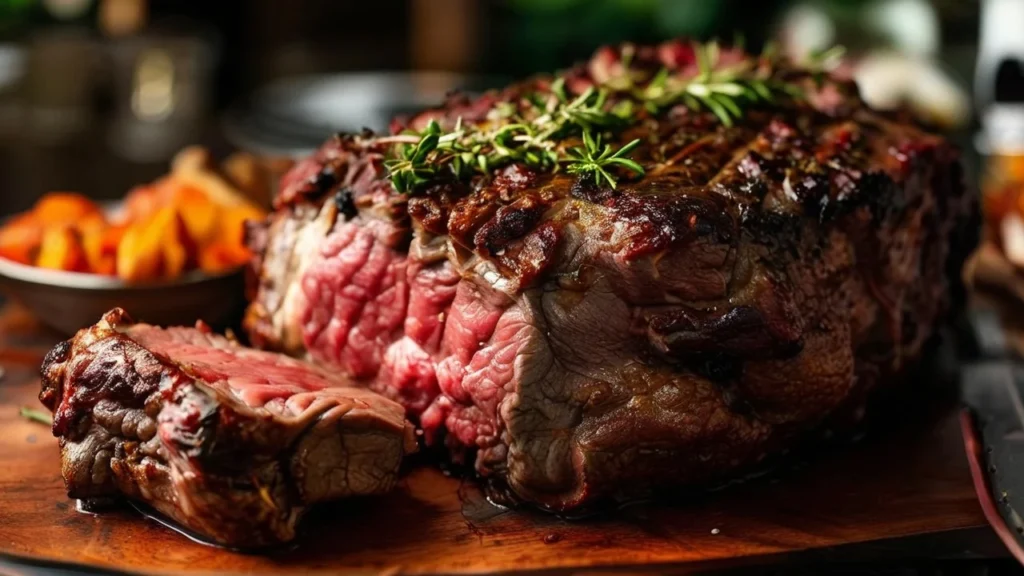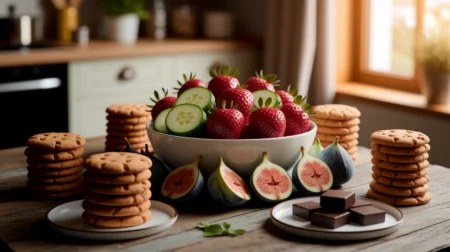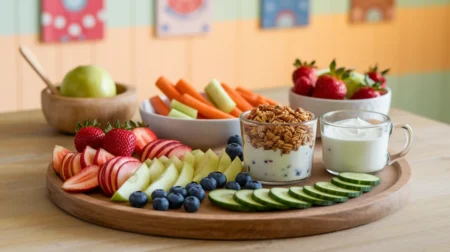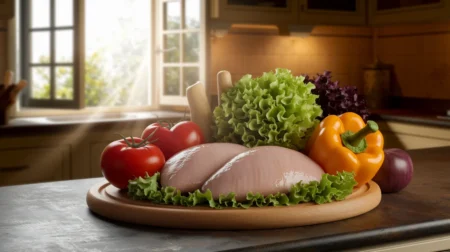Prime Rib: A Luxurious Cut for Special Occasions
Key Takeaways:
- Prime rib is a premium cut of beef known for its rich flavor, tenderness, and juicy texture.
- It is typically reserved for special occasions and can be served as a roast or steak.
- Despite its high-fat content, prime rib is packed with protein, vitamins, and minerals, offering both indulgence and nutrition.

Nutritional Profile of Prime Rib
Prime rib, often associated with celebratory feasts, is rich in flavor and nutrients. Here’s a breakdown of its nutritional values per 100 grams of cooked prime rib:
| Nutrient | Amount |
|---|---|
| Calories | 294 kcal |
| Protein | 24 grams |
| Total Fat | 22 grams |
| Saturated Fat | 10 grams |
| Cholesterol | 70 mg |
| Iron | 2.7 mg (15% DV) |
| Zinc | 5.1 mg (46% DV) |
| Vitamin B12 | 2.4 mcg (100% DV) |
| Niacin (B3) | 6.7 mg (33% DV) |
High in Protein
Prime rib provides a substantial amount of protein, essential for muscle repair, immune health, and overall bodily functions.
Rich in Iron and Zinc
With significant levels of iron and zinc, prime rib supports immune health, energy production, and cognitive function.
Cooking Prime Rib: Different Methods for Perfect Results
Prime rib is typically roasted to maintain its tenderness and juicy texture, but there are different ways to cook it depending on your preference:
1. Roasting
Roasting is the most common way to prepare prime rib. Slow roasting at a low temperature ensures even cooking and locks in the meat’s natural juices.
2. Grilling
Grilling prime rib adds a smoky flavor and creates a crispy crust while keeping the inside tender and juicy.
3. Reverse Searing
This method involves slow-cooking the prime rib first, then searing it at high heat to create a crispy, flavorful exterior.
Health Benefits of Prime Rib
1. Rich Source of Essential Nutrients
Prime rib provides vital nutrients such as iron, zinc, and vitamin B12, all of which are essential for various bodily functions, including red blood cell formation and immune support.
2. High-Quality Protein
As a rich source of protein, prime rib helps in muscle maintenance, repair, and overall bodily functions.
3. Energy-Boosting
With its high content of vitamins like B12 and niacin, prime rib supports metabolism and energy production, making it a great option for those needing an energy boost.
Serving Suggestions for Prime Rib
Prime rib is versatile and pairs well with a variety of sides and sauces. Here are some ideas for serving prime rib:
| Dish | Description |
|---|---|
| Classic Roast Prime Rib | Served with au jus and horseradish sauce. |
| Grilled Prime Rib | Finished with a smoky crust, paired with garlic butter. |
| Prime Rib Sandwich | Thinly sliced and served on a crusty roll with onions. |
| Prime Rib with Red Wine Sauce | Served with a rich, savory red wine reduction. |
| Prime Rib Steak | Cut into thick steaks and seared to perfection. |
Flavor Pairings with Prime Rib
The richness of prime rib pairs well with bold and savory flavors, as well as some refreshing and acidic elements:
| Flavor Profile | Suggestions |
|---|---|
| Herbs and Spices | Rosemary, thyme, garlic, black pepper |
| Sauces | Horseradish, au jus, red wine reduction |
| Vegetables | Roasted Brussels sprouts, mashed potatoes, asparagus |
| Fruits | Cranberry relish, apple sauce |
Cooking Tips for Prime Rib
To ensure your prime rib is cooked to perfection, follow these simple tips:
1. Season Generously
Rub the prime rib with a mixture of salt, pepper, and herbs like rosemary and thyme to enhance its natural flavors.
2. Use a Meat Thermometer
To achieve your preferred doneness, use a meat thermometer. For medium-rare, aim for an internal temperature of 130°F (54°C). For medium, aim for 135-140°F (57-60°C).
3. Let It Rest
Allow the prime rib to rest for at least 15-20 minutes after cooking. This allows the juices to redistribute, making the meat tender and juicy.
Prime Rib vs. Ribeye: What’s the Difference?
Both cuts come from the same section of the cow, but they have different characteristics:
| Characteristic | Prime Rib | Ribeye |
|---|---|---|
| Cut | Larger roast with bone | Smaller, boneless steak cut from prime rib |
| Cooking Method | Often roasted or grilled whole | Typically pan-seared or grilled as individual steaks |
| Flavor | Rich and juicy with a fattier taste | Tender with a more concentrated beef flavor |
| Best For | Special occasions, large gatherings | Quick meals, steak dishes |
Conclusion
Prime rib is a luxurious and indulgent cut of meat perfect for special occasions. Whether roasted, grilled, or seared, this tender and flavorful beef offers a rich taste while providing essential nutrients like protein, iron, and zinc. With the right preparation and seasoning, prime rib can become the centerpiece of a memorable meal.
FAQ
Q: What’s the difference between prime rib and ribeye?
A: Prime rib is a larger roast that often includes the bone, while ribeye is a smaller, boneless steak cut from the same section.
Q: How long should I cook prime rib?
A: For medium-rare, roast the prime rib for about 20 minutes per pound at 350°F (175°C), or until it reaches an internal temperature of 130°F (54°C).
Q: Can I freeze cooked prime rib?
A: Yes, cooked prime rib can be frozen for up to three months. Store it in an airtight container or tightly wrapped in foil.
Q: What’s the best way to reheat prime rib?
A: Reheat prime rib in the oven at a low temperature (around 250°F/120°C) to maintain its tenderness without overcooking it.
Q: What are good side dishes for prime rib?
A: Popular side dishes include roasted vegetables, mashed potatoes, Yorkshire pudding, and creamy horseradish sauce.










